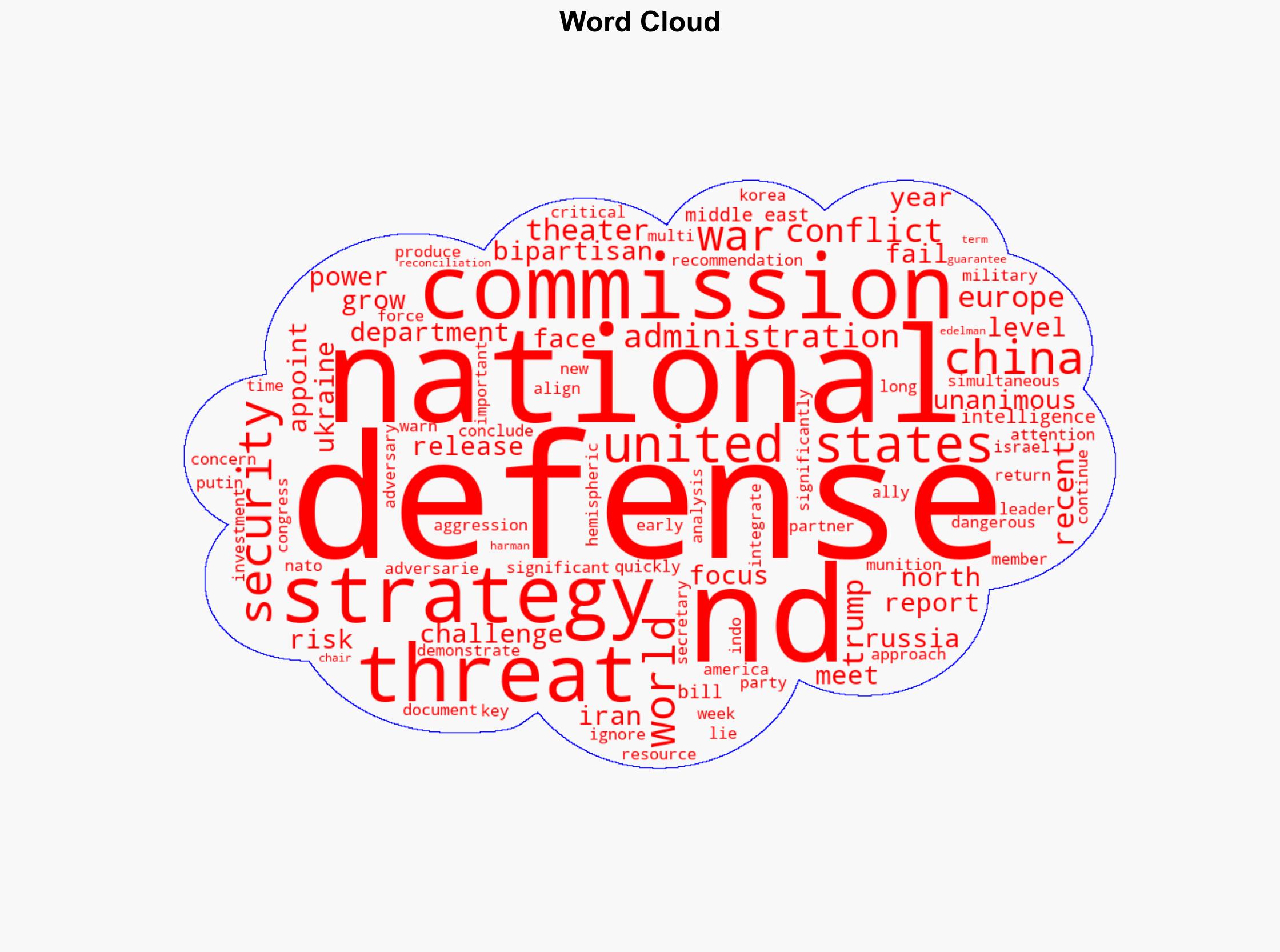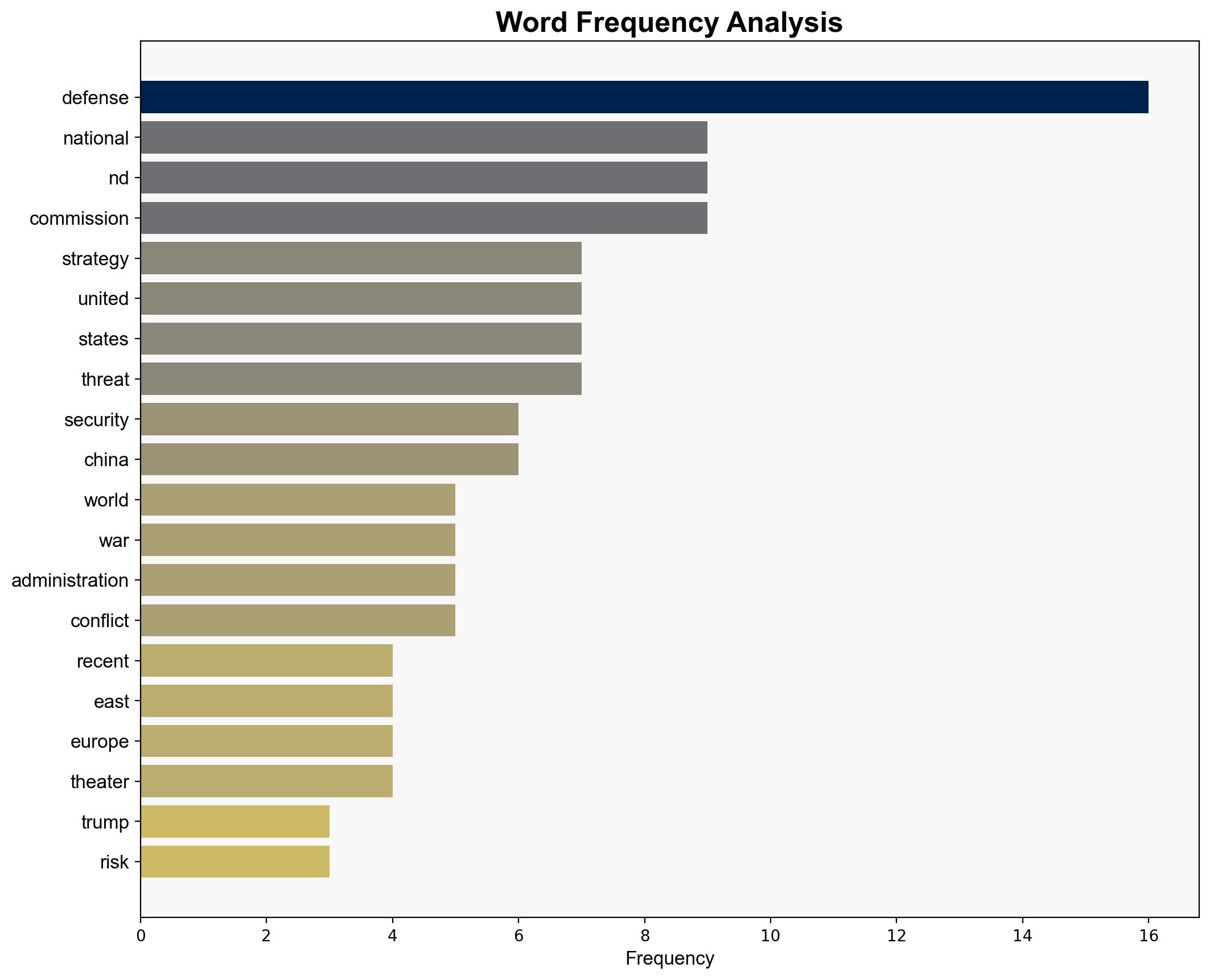Trumps Next Defense Strategy Risks Leaving the US Underprepared – The Bulwark
Published on: 2025-11-03
Intelligence Report: Trumps Next Defense Strategy Risks Leaving the US Underprepared – The Bulwark
1. BLUF (Bottom Line Up Front)
The most supported hypothesis is that the proposed defense strategy, focusing primarily on hemispheric defense and China, risks leaving the US underprepared for multi-theater conflicts involving aligned adversaries. Confidence in this assessment is moderate due to potential biases and incomplete data. It is recommended to reassess the strategy to ensure balanced global readiness.
2. Competing Hypotheses
1. **Hypothesis A**: The new defense strategy, emphasizing hemispheric defense and China, adequately addresses the most critical threats by reallocating resources to counter China’s growing influence and focusing on domestic security.
2. **Hypothesis B**: The strategy’s narrow focus on hemispheric defense and China neglects significant global threats, leaving the US vulnerable to multi-theater conflicts involving coordinated adversaries like Russia, Iran, and North Korea.
Using ACH 2.0, Hypothesis B is better supported by the intelligence, which highlights the risks of underestimating coordinated threats and the need for readiness across multiple theaters.
3. Key Assumptions and Red Flags
– **Assumptions**: Hypothesis A assumes that China and hemispheric threats are the most pressing and that other regions can be deprioritized without significant risk. Hypothesis B assumes adversaries will coordinate against US interests globally.
– **Red Flags**: The intelligence may be biased towards emphasizing threats from China due to recent geopolitical tensions. There is a lack of detailed analysis on the capabilities and intentions of other adversaries.
– **Blind Spots**: Potential underestimation of non-state actors and cyber threats that could exploit the narrowed focus of the strategy.
4. Implications and Strategic Risks
– **Cascading Threats**: A narrow focus could lead to gaps in global defense posture, allowing adversaries to exploit these weaknesses.
– **Geopolitical Risks**: Ignoring multi-theater readiness could embolden adversaries to act in concert, increasing the likelihood of simultaneous conflicts.
– **Economic and Cyber Dimensions**: Reduced presence in key regions may impact economic interests and increase vulnerability to cyber threats.
5. Recommendations and Outlook
- Reevaluate the defense strategy to ensure balanced global readiness, incorporating multi-theater conflict scenarios.
- Enhance intelligence capabilities to monitor and assess the coordination among adversaries.
- Best Case: Strategy adjustment leads to improved global posture and deterrence.
- Worst Case: Failure to adjust results in strategic surprise and multi-theater conflict.
- Most Likely: Partial adjustments improve readiness but may still leave gaps in certain regions.
6. Key Individuals and Entities
– **Donald Trump**: Former US President, associated with the defense strategy focus.
– **Pete Hegseth**: Secretary of Defense, involved in clarifying the strategy’s focus.
– **Vladimir Putin**: Russian leader, representing a persistent threat in Europe.
7. Thematic Tags
national security threats, cybersecurity, counter-terrorism, regional focus





